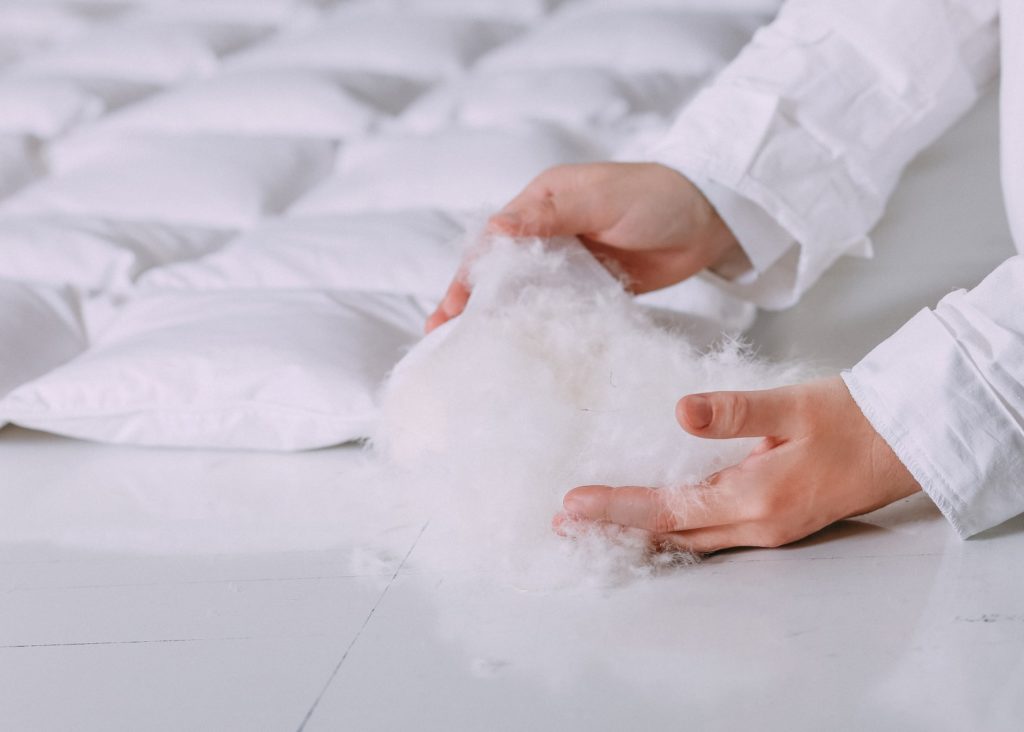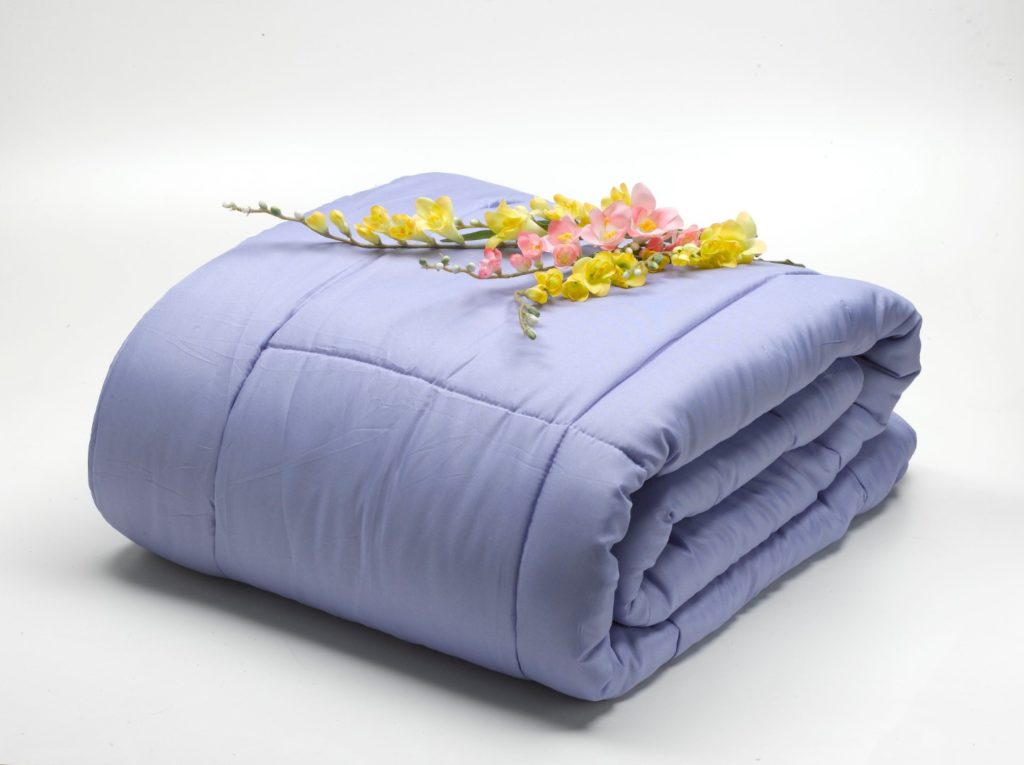
Although duvets and comforters are both the last covering we place on our bed, there are distinct differences between the two, namely their fabrication, filling and care.
Follow me as I go through some of their differences and explain how to wash duvets and comforters.
Duvets
What is a Duvet?
Duvets are essentially bags filled with down, feathers or polyester fibres for a lofty soft comfort that sits gently on the top of your mattress. Their pocket stitched design promotes warmth in the winter and coolness during the summer.
They are stuffed into a fashionably designed bag, or duvet cover with a zippered or buttoned closure, and may have matching shams and decorative cushions. The overhang off the edges is minimal, so a bed-skirt to cover the base mattress is suggested.

How to Wash Duvets
Unless the manufacturer’s label states otherwise, washing duvets can be done in a standard washing machine, unless it is polyester-filled which may require industrial-sized-washers and dryers. Synthetic fibres do not flatten, as natural fibres do, so their volume remains the same requiring more room to agitate.
A small amount of gentle soap in the gentle cycle every season will be enough to restore its freshness and extend the life of your duvet. An extra cold-water rinse will help remove any soap residue. If there is any yellowing of the fabric, consider adding 1 cup of peroxide and ½ cup of white vinegar to your detergent, which will restore the whiteness.

Your duvet and cushion covers can be easily washed weekly along with your bed sheets. It all depends on how many sticky fingers or soiled paws come to rest on your bed. Throwing in a couple of tennis balls into the dryer on the low temperature setting will prevent clumping of the filling and help with the tumbling.
Make certain that the filling is completely dry before throwing it onto your bed to prevent mould. It may require a couple of hours. Once dry, a good shake to fluff up the pockets of filling will restore that soft lofty look that is customary on a duvet-covered bed.
Comforters
What is a Comforter?
Comforters have less filling, have an intricate stitched design throughout and typically hang to the floor. They are generally sold in the bed-in-a-bag concept where a complete set of matching items like shams, cushions, and sometimes even curtains are included. In many cases, these are mostly decorative and removed completely at bedtime while a blanket for warmth and comfort lies underneath it.
In many instances they have a usable reversible side, which can extend its washing cycle if it is soiled. Nevertheless, washing them regularly is still the best way to keep allergens at bay, and stains from forming when there are spills, sticky fingers, or muddy paws about. As with duvets, giving them a good wash every season is ideal.
How to Wash Comforters
Washing your comforter may not be very easy in your standard washer as most are polyester filled and as mentioned above, the fibres don’t flatten and require more space. Besides, they are much larger by design. Most of the cushions that come with the set have removable cases, but those that don’t can also be thrown in the wash in a standard machine depending on their size.
Following any specific manufacturer’s washing instructions, using a small amount of gentle soap in the gentle cycle will do the job. Any stains can be spot-treated beforehand. Although not as lofty as a duvet, there is some fluffing to do to get all the fibres back in their place. Using tennis balls in the dryer will restore your comforter back to its original state.
Whether you prefer duvets or comforters, keeping them clean and allergen-free for your comfortable sleeping experience is essential. Make it a seasonal thing!
Angela, Your Sleep Expert


